The market for AR & VR is expected to generate over $40 billion in 2024, and with Apple entering the space earlier in the year with the Apple Vision Pro headset, it seems that the mixed reality industry is only going to grow from here.
The Apple Vision Pro has huge potential to revolutionize spatial computing, and not only in entertainment. The device can be used by businesses across many different industries. For those who’d like to explore how to harness this product for your brand, this guide covers all the important points, including how the Apple Vision Pro works, the technology behind it, and how companies can use the Apple Vision Pro to grow their brand.
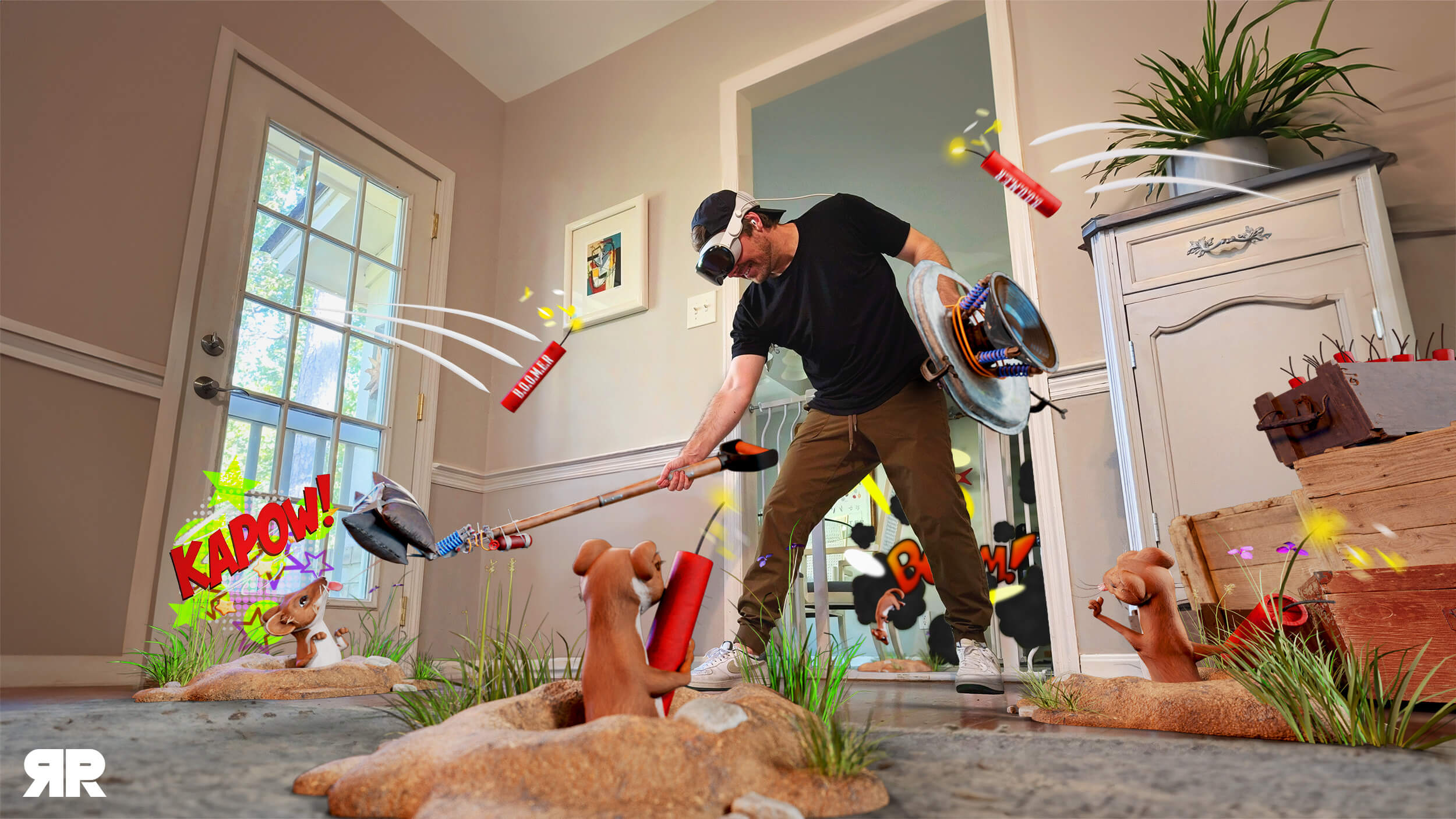
Key Takeaways:
- Immersive Engagement: The Apple Vision Pro can be used to improve customer interaction through the virtual experience and more immersive storytelling and customer engagement.
- Early Days: This is a first generation device so it will take time to gain adoption and build a developer ecosystem but the resolution, form factor, and intuitive gestures is already setting a new industry standard for spatial computing hardware.
- Multi-Industry Applications: Its versatility allows for its use in retail, healthcare, education, gaming, sports, and events and makes it a valuable tool for engaging customers across industries.
- Enhanced Accessibility: The design prioritizes user comfort and the virtual UI and UX are familiar to anyone who has used Apple products before.
- AI and the Vision Pro’s Future: The integration of AI with the Vision Pro is set to massively boost the user experience, creating a much more personalized experience for the user within the virtual world.
Understanding the Apple Vision Pro
The Apple Vision Pro is a mixed-reality headset designed to bridge the gap between the physical and digital worlds by adding digital components to our physical world. Apple has positioned it primarily as a work/business device rather than to be used for entertainment like Meta’s Quest Pro.
The device is Apple’s attempt to take the spatial computing experience to the next level. This is the first generation device and it only came out in February 2024, so it will take time for the developer ecosystem to grow and there are of course limitations with this device, but the potential is huge, and it’s already being used for everything from working to watching movies and reliving memories.
Accessibility Features of the Apple Vision Pro
Apple has always made accessibility one of its priorities, and the Apple Vision Pro is no different. The adjustable band helps ensure that the headset is both secure and comfortable.
Another consideration is the product’s weight. The Vision Pro uses an external battery attached via a cable which means it’s much lighter and makes it easier to pick up and less tiring on the wearer’s neck. The VisionOS UI and UX also resemble other Apple operating systems, which can help anyone who’s familiar with other Apple products like the iPhone or Apple Watch.
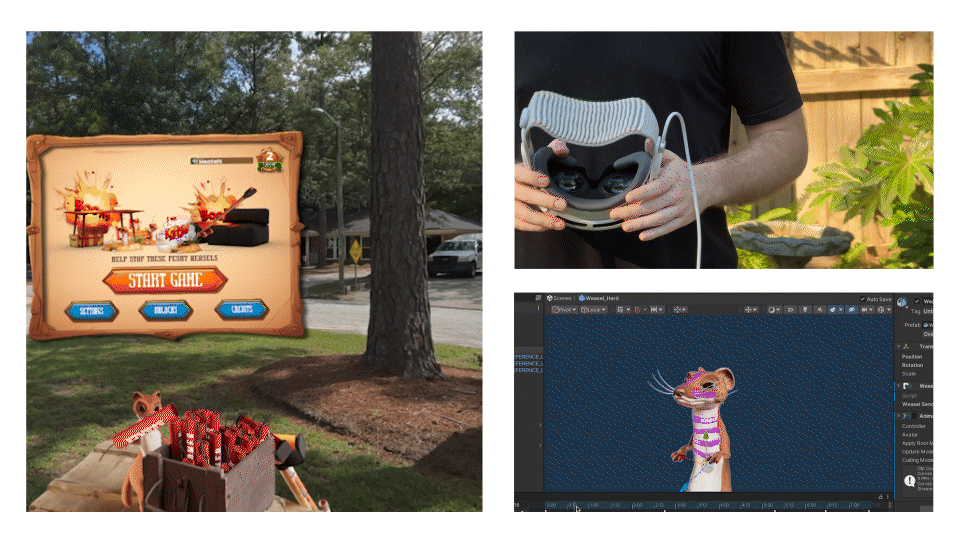
Apple Vision Pro Development
Apple designed visionOS for their Vision Pro devices. It’s an operating system built from scratch but on the foundations of iOS and macOS. Those who’ve used Apple’s other devices will feel familiar with how everything works. There’s also an App Store with software specifically developed for visionOS.
The Apple Vision Pro Software Development Kit (SDK)
The Apple Vision Pro SDK, built on SwiftUI, allows creators to build software and make their own apps available on the device. Creating spatial experiences is also possible with the well-known Unity game engine, through the Polyspatial SDK. It offers comprehensive documentation, samples, and templates, along with toolkits and an editor that presents familiar workflows and features. The partnership between Apple and Unity helps developers deliver fantastic spatial computing solutions.
At Rock Paper Reality, we have years of experience building mixed reality apps in both Unity and Swift. We’ve leveraged both these technologies to build native iOS applications that use Apple’s MR frameworks to create a great user experience and customize our approach to meet the needs of each client we work with. We make sure that every app we build delivers exceptional performance and client satisfaction.
Let’s chat
Not sure where to start? Book a free strategy call with us to get started! No strings attached.
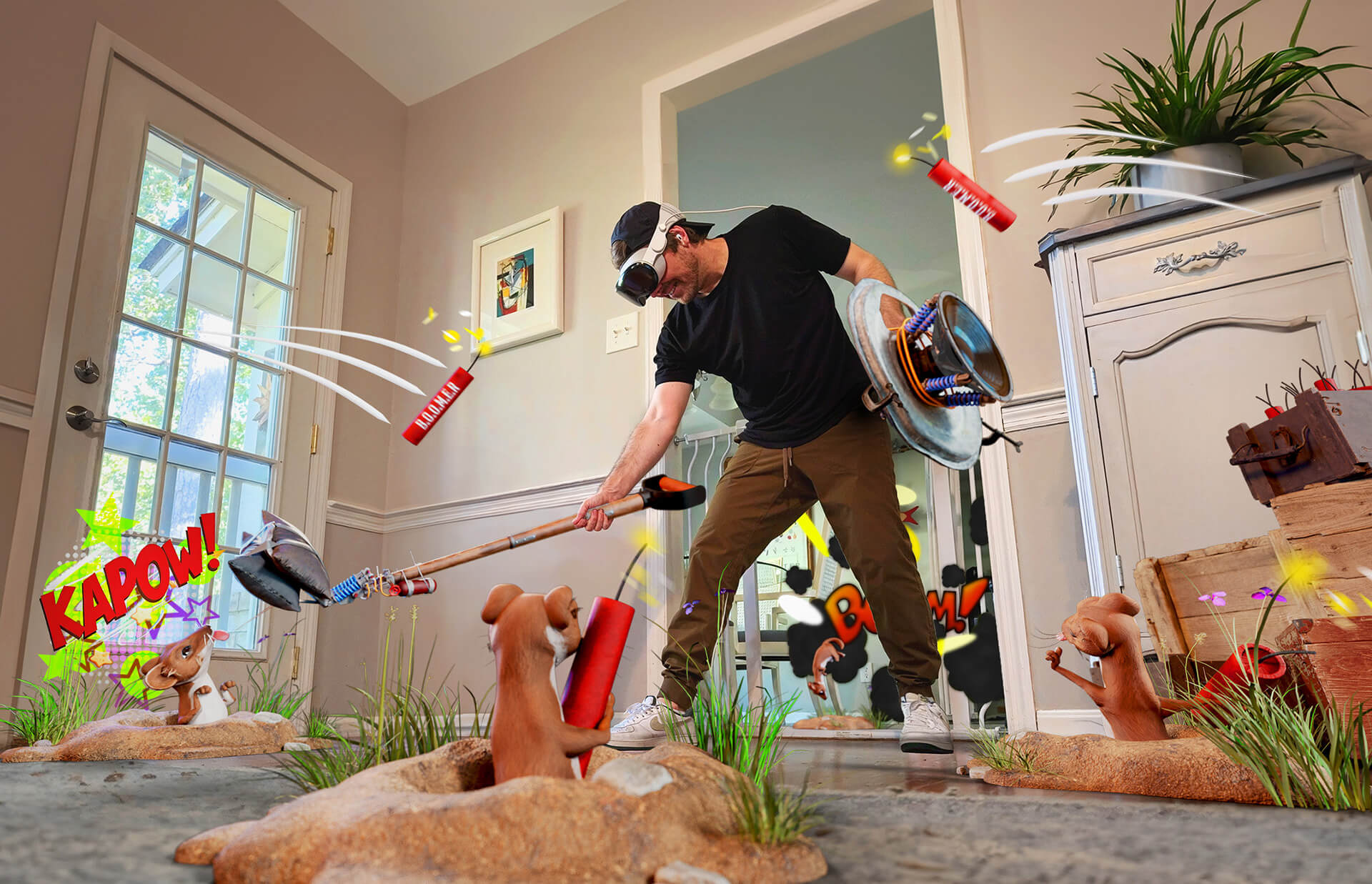
The Technology Behind the Apple Vision Pro
The headset has integrated infrared cameras that follow the users’ eyes as they move, and cameras pointing down on the outside of the device are used to track hand movements. Apple also added Lidar sensors, which work together with the cameras to render a 3D mesh of the users’ surroundings.
Here are a few of the key features of the Apple Vision Pro:
- Separate displays for each eye: Each display has a 3D lens meaning the UI is always visible to the user, and each display also has an impressive 11.5 million pixels (for reference, the Meta Quest Pro has about 3.7 million). Special magnetic lenses are available for anyone who wears prescription lenses.
- Integrated audio: The Apple Vision Pro has audio pods built in next to each ear to let the user hear both what’s around them in the real world and any sound coming from the device itself. Users can also connect the device to Apple’s AirPods or Beats headphones if they want the noise-canceling that comes with the AirPods Pro.
- Battery: The battery connects to the headset via an aluminum capable and can support about 2 hours of general use or 2.5 hours of video playback and the headset comes with a USB-C cable for charging. Unlike the Apple Watch or iPhone, the Apple Vision Pro and its battery aren’t water resistant and should be protected from dampness and humidity.
- Physical Buttons: Much like the Apple Watch, the Apple Vision Pro has a single button on its top left (called the “top button”) and a button on the top right (called the “digital crown button”). Using these two buttons, the wearer can navigate to the home page, recenter their current view, take photos, and more.
The product also comes with multiple bands and internal cameras that record the user’s eyes and face and display it on an external OLED panel. Instead of handheld controllers, voice controls or hand gestures are used to control the device.
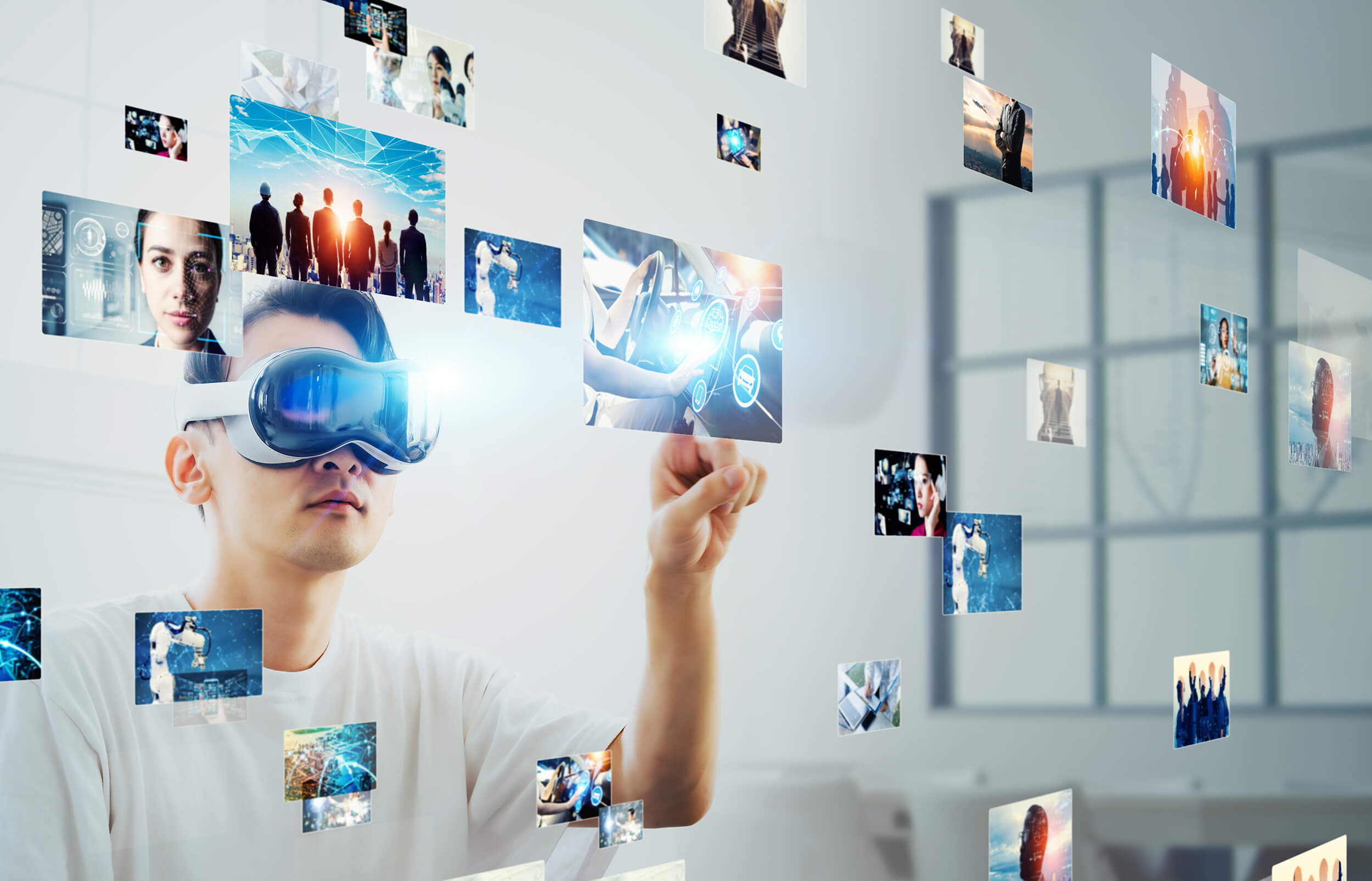
What Is Spatial Computing?
Apple has tossed a new term into the immersive vocabulary: Spatial Computing. So what does it mean and why is it important? Spatial computing can be thought of simply as computers that have spatial awareness. It’s important because it means your device understands where it is (and therefore where you are) in a virtual or physical environment. This ensures you have the right POV so that any digital content is rendered accurately for your perspective.
You might be thinking, “Well that sounds a lot like virtual reality or augmented reality…” and you’re right. Spatial computing is just a broader bucket term that encompasses any technology that can compute digital information with the physical world in real-time.
Apple’s spatial computing, for example, uses cameras and sensors to track the users’ movements and understand the environment. After calculating all the details, the device adds digital objects to the users’ physical world and lets them manipulate it.
Keep up to date
Sign up to our newsletter for exclusive updates and content, delivered directly to your inbox.
Spatial Computing vs. AR, VR, and XR
To sum it up, here’s a quick overview of how spatial computing compares with related technologies:
- Augmented Reality (AR): AR takes the users’ current physical surroundings and adds digital elements to it. The spatial computing vs AR comparison is pointless because augmented reality is often a part of spatial computing. The AR market is estimated to be worth $88 billion by 2026, up from $32 billion in 2022. AR has applications across healthcare, entertainment, and consumer goods.
- Virtual Reality (VR): VR generates a virtual world and fully immerses the user in it, without them being able to see anything from their immediate real-world surroundings. VR sets have become popular in gaming and entertainment. It’s estimated that the VR market will be worth $38 billion by 2029, up from $16 billion in 2024.
- Mixed Reality (MR): In mixed reality experiences, users can engage with both digital and physical elements simultaneously. Unlike AR, where digital and physical elements remain separate, and VR, which fully immerses users in a simulated environment, MR allows for interaction between the two.
- Extended Reality (XR): XR is an umbrella term that covers AR, VR and MR technologies.
- Spatial Computing: Spatial computing, just like XR, is an umbrella term for AR, VR, and MR because all of these technologies require hardware and software that has spatial awareness of the physical or virtual environment that the user is in.

What are the Benefits of Using the Apple Vision Pro for Brand Growth?
The Apple Vision Pro provides many benefits to companies looking to boost engagement and brand interactions with consumers. We’ll explore some of them below.
Improved Customer Engagement
Apps built on the Apple Vision Pro can be used to engage customers in ways that previously seemed impossible. For example, customer support could be provided by a virtual agent that the user could see and talk to directly rather than via text or on the phone, as is (often frustratingly) the case today.
Brands could advertise their products and services via the headset too. The Vision Pro can take this to another level with virtual try-on technology, allowing the wearer to see how a particular item fits them before they buy it. Apple has already filed a patent to create a virtual store to let users run product demos, check out new product features, and more.
Immersive Storytelling
Storytelling is a crucial part of video games, especially in genres like science fiction or role-playing. But telling a good story goes beyond that, and it can be an innovative way to create a narrative around a brand that engages users and brand interaction.
The Apple Vision Pro SDK has various options to tailor everything to a brand’s specific needs and combine visual and auditory elements to create compelling stories. Instead of a standard “About Us” page, a business can immerse the wearer into a virtual world and show them exactly how it progressed from day one to where it is today.
Better Service/Product Visualization
The Apple Vision Pro allows brands to offer customers a unique opportunity to visualize products in their own environment before making a purchase. By using augmented reality, consumers can see how items like furniture, décor, or clothing fit within their personal spaces, reducing uncertainty and boosting confidence in their buying decisions.
This capability not only enhances the shopping experience but also helps minimize return rates, ultimately leading to higher customer satisfaction and loyalty. Brands that leverage this technology can create a more interactive and engaging shopping journey that sets them apart from competitors.
Applications of the Apple Vision Pro Across Industries
Despite being Apple’s first foray into the world of XR, the device already has vast potential across a range of industries. Here are just a few examples.
Retail and E-Commerce
There’s massive potential for the Apple Vision Pro to improve the shopping experience in the retail and e-commerce industry. Imagine allowing customers to see products in their own homes—will that stylish lamp enhance their nightstand? Is that spacious closet the perfect fit for their needs? Can that elegant table complement their dining area?
Providing a virtual try option like this reduces returns and the costs associated with them for the company. The engaging environment created by VR has also been proven to boost conversions by 150% for brands using the technology.
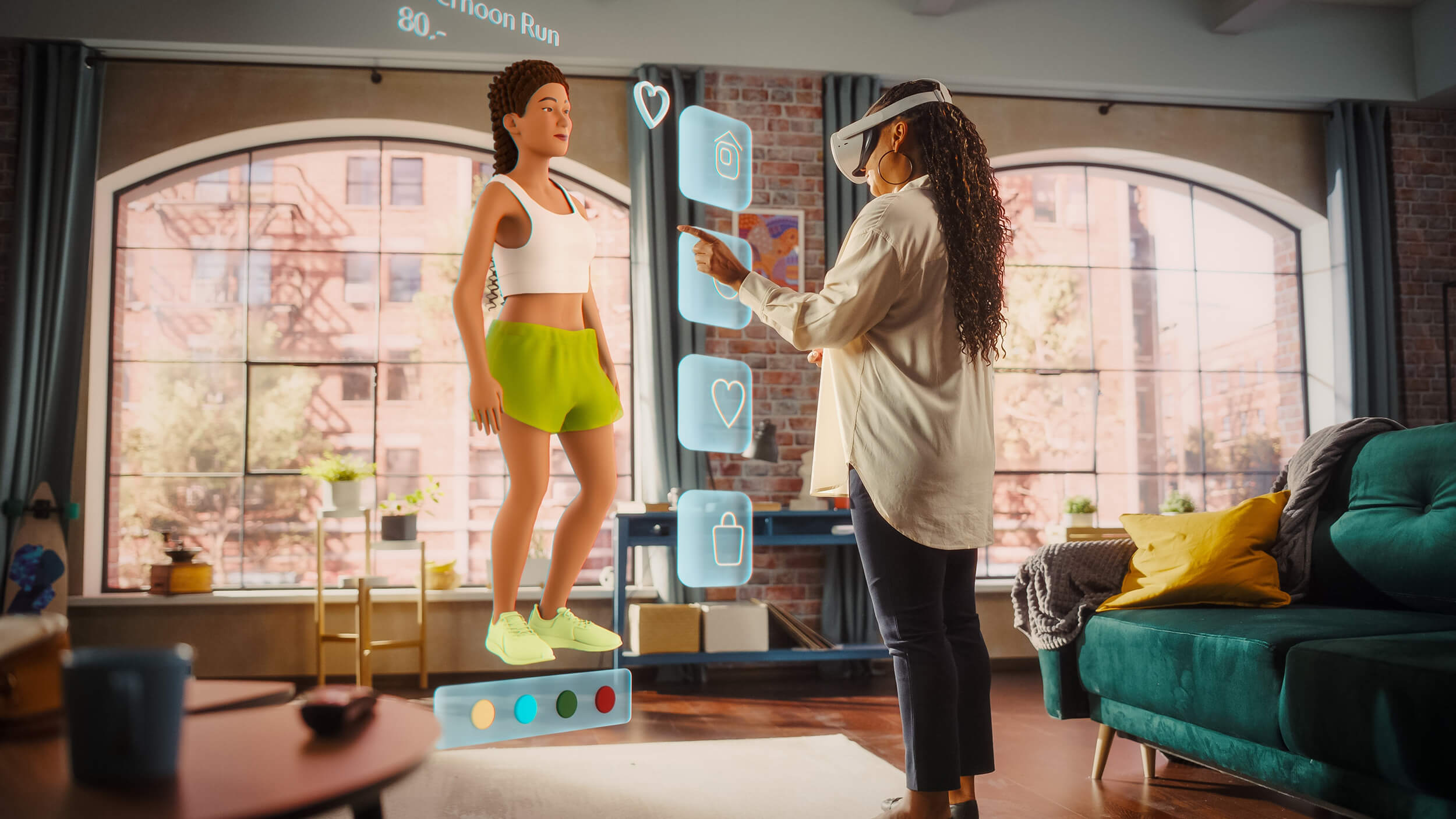
Healthcare
Some healthcare apps have already been for the Apple Vision Pro and its potential to improve the healthcare industry is massive. Realistic simulations can help educate nurses and doctors to handle different situations better, especially in critical scenarios.
Siemens Healthineers’ launched a healthcare app tailored for Apple Vision Pro that allows users to explore immersive, interactive holograms of the human body derived from medical scans within their real-world surroundings. The app allows for surgical planning, improves medical education, and helps patients better understand procedures by visualizing them digitally.
Xaia is a virtual assistant powered by AI and spatial computing. It uses these technologies to help support people’s mental health needs. Users can interact with Xaia and ask them to create different Apple Vision Pro environments to calm them. It’s already available on the App Store for the Vision Pro. The Apple Vision Pro is the most common device used to operate medical spatial computing apps.
Education
Immersive environments are more interactive and enhance student comprehension. Students can perform virtual dissections or visit different historical sights. Rather than watching a video of the Roman Colosseum, spatial computers can place them inside this structure and make the whole experience more nagging and fun.
Mixed reality technologies have already been shown to make people almost 3x more confident to apply what they’ve learned and make them feel nearly 4x more emotionally connected to the content than in a traditional classroom. Apple clearly sees the Vision Pro as having huge potential to improve the current forms of education, and there are many stories online of people using it to get students more engaged, improve collaboration and help them learn more.
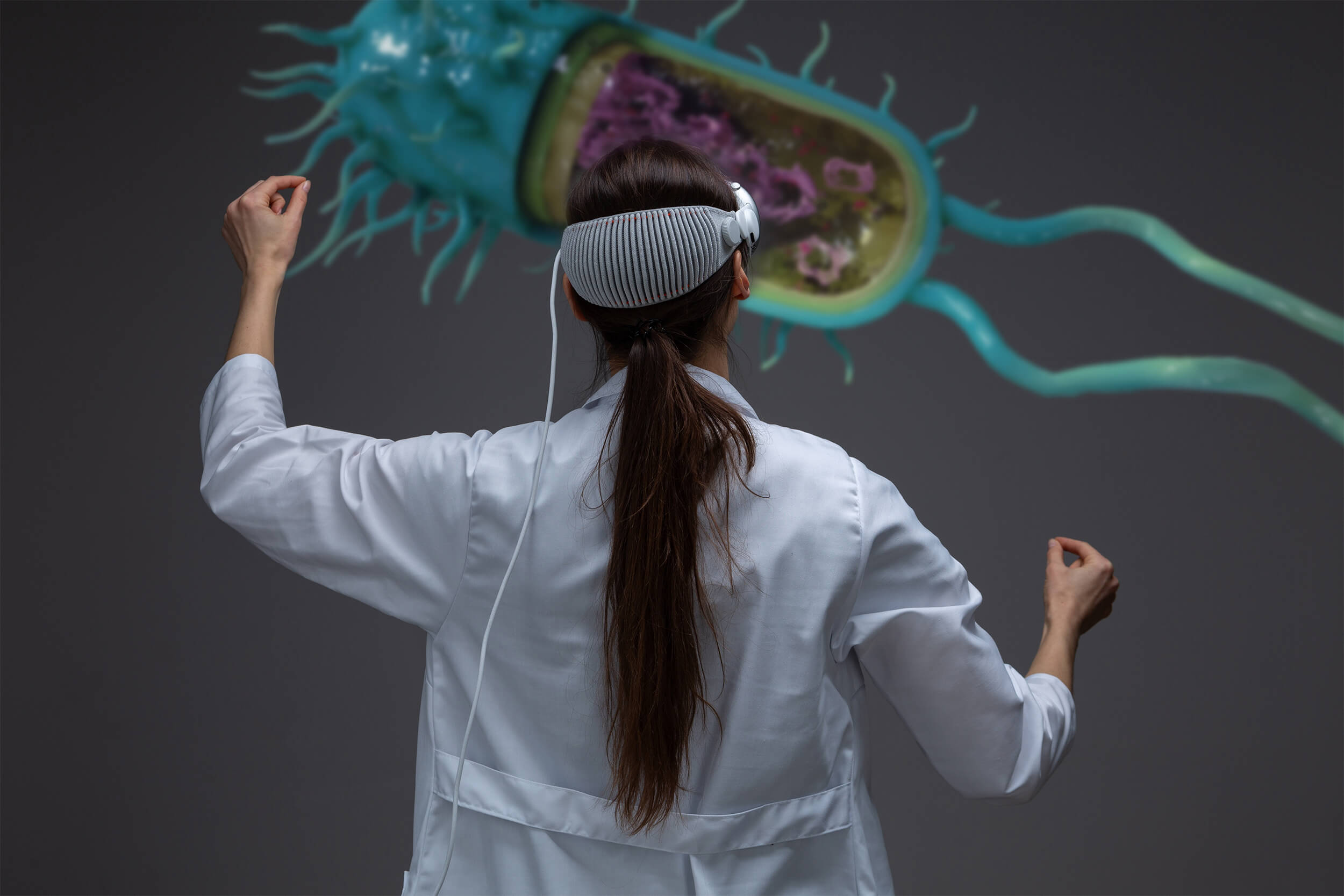
Gaming and Entertainment
At the moment, MR technology is probably best known for its applications in gaming and entertainment. AR has been used for everything from increasing engagement on social media to creating a more immersive experience in theme parks and stadiums. Apple has made its most popular movies and TV shows from Apple TV available on the Vision Pro and claims that “visionOS games in Apple Arcade offer completely new ways to play by using the space around you.”
Apple intentionally chose to create a device designed for a hand-free and intuitive user interface, which is optimal for everyday lifestyle use cases. Developers are starting to build games with hand tracking and gaze in mind (check out Pop Goes the Weasel as an example built by our team at Rock Paper Reality!), but no controllers can be a limitation for gaming. Most games designed for the Meta Quest utilize the controllers and therefore do not port over to the Apple Vision Pro very well. That being said, there are many startups building third party controllers to use with the Vision Pro to unlock gaming use cases.
Sports
In sports, mixed reality makes fans feel much closer to the action. Enjoying games from a 3D environment while receiving unique statistics regarding the event makes for a far more immersive experience than just watching it on TV at home. Gen Z especially, craves a more social and engaging sports experience.
Currently, only about 5% of sports fans say they have used VR to watch sports in the last year but 70% of Gen Z and Millennials say they’d be interested in doing so; clearly there’s a large market there for someone to enter. The potential applications of AR in sport are immense, and in a few years, perhaps we’ll all be watching our favorite sports as if we were in the stadium, all thanks to mixed reality and the Apple Vision Pro.
Events
AR is already being used at events and having a huge impact, adding the capabilities of the Apple Vision Pro opens up a new set of possibilities. With its advanced features, such as spatial audio and high-resolution displays, the Apple Vision Pro can boost event engagement and create a level of immersion that was previously unattainable. The headset allows for interactive storytelling, real-time data visualization, and seamless integration with digital content, any event can be more personalized and more memorable for those attending.
AI and the Apple Vision Pro
AI, when combined with the Apple Vision Pro, promises to revolutionize how we interact with our environments. Blending AR with an intelligent and dynamic will lead to a far more immersive and personalized experience. Progress in AI and MR over the last decade has been astonishing, and if it continues at its current rate, headsets like the Apple Vision Pro might become a much bigger part of our daily lives than we ever imagined.
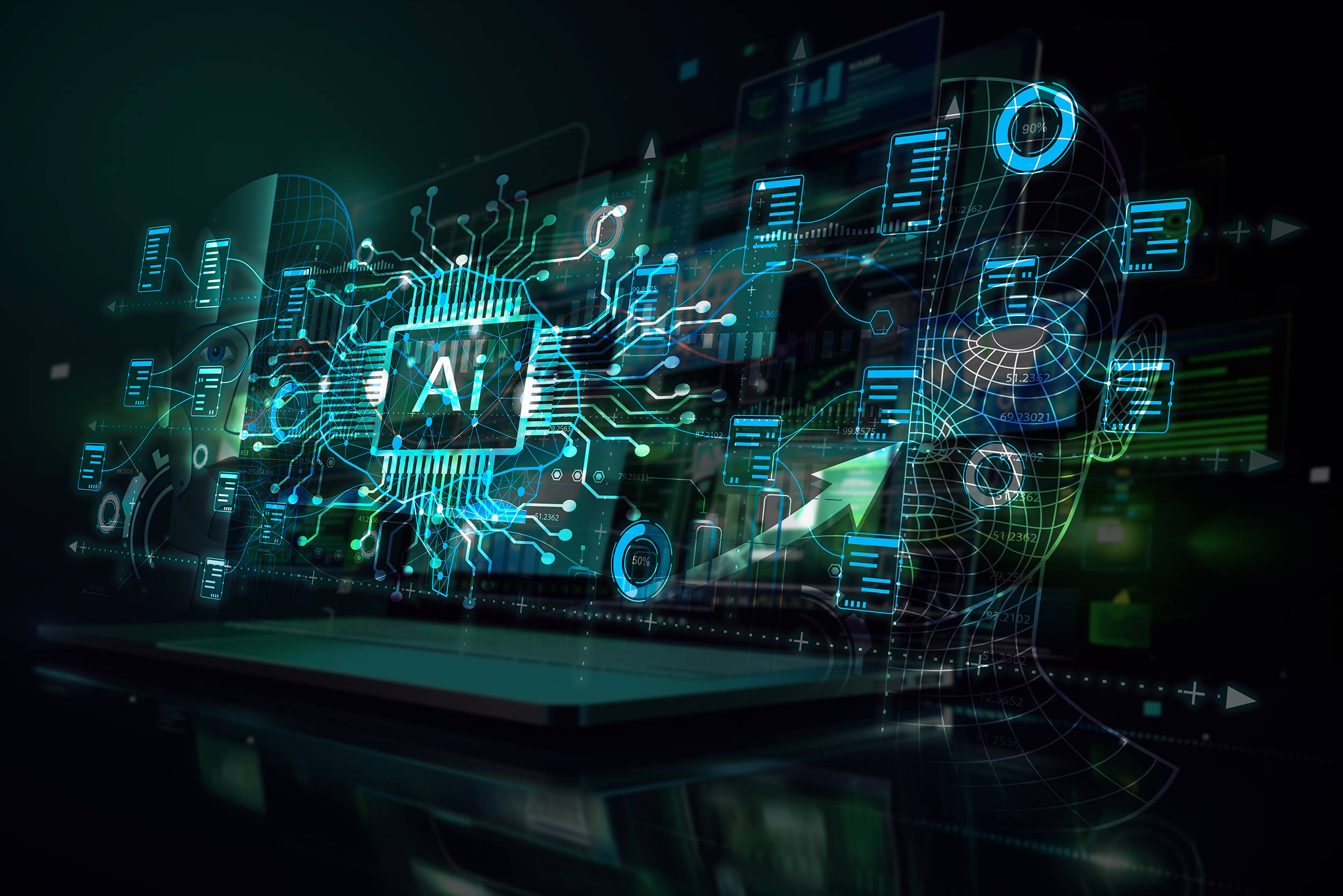
How Can AI Improve the Apple Vision Pro’s UX?
According to Bloomberg, Apple Intelligence (Apple’s AI system to improve the UX on their other devices) will be coming to the Vision Pro eventually, although not in 2024. Apple analyst, Ming-Chi Kuo, says that Apple’s eye tracking and gesture control software, combined with Apple Intelligence, will provide a better UX for the spatial computing features of the Vision Pro. Improved AI on the device also paves the way for a much more personalized experience for the wearer of the device. Generative AI can also create a more personalized environment for users, massively boosting engagement and advertising opportunities for brands.
Future Trends in AI and Immersive Technology
AI’s impact on so many areas of our society is already being felt. It’s no different in the immersive technologies space.
AI will bring the cost of 3D development and XR development down. Our team is already using it today to help with the code for our scripts or game logic as well as for generating quick visual concepts. The technology isn’t mature enough to develop 3D assets entirely though. Right now AI is great for text, images, and it’s getting better for video, but we’re still not there yet for 3D assets or environments. There’s simply not enough organized 3D data to train these models on yet, but 3D data is being created faster than ever before and we’re getting closer by the day.
Late in 2024, Apple released Depth Pro, an AI model that significantly improves on the current depth perception technology and can create 3D depth maps from 2D images in less than a second, using less data than traditional models. A live demo of the model is available on Hugging Face for anyone to try out.
Hardware costs will come down. Batteries continue to get smaller and chips continue to get more powerful. Apple launched with a very expensive device, but will continue to bring costs down just like Meta has done to make these devices more accessible. We’re still in the early stages of laying the foundation for spatial computing devices. As the device reaches a price that is more accessible to a wider audience, more investment will go into the content as well.
AI and MR technology are perhaps the two fastest-growing and most important technologies of our lifetimes so far, and their full impact on the world will only grow from here. With all these improvements coming to the Vision Pro, and likely a lot that aren’t known about yet, there’s perhaps never been a better time to start building applications for brands that want to get ahead of the competition.
Transforming Business Interaction through Mixed Reality
Although there’s plenty of potential and room for wider adoption yet, the Apple VIsion Pro already has incredible benefits for businesses looking to grow their brand. As MR technology evolves, its applications across diverse industries—from retail and healthcare to education and entertainment—are set to reshape how we interact with products and services.
By harnessing the immersive capabilities of the Vision Pro, businesses can create compelling narratives and experiences that resonate deeply with their audiences. As the market for AR and VR continues to grow, early adopters of this cutting-edge technology will not only enhance customer engagement but also secure a competitive edge in an increasingly digital landscape. Embracing the Apple Vision Pro today may very well define the future of brand interaction tomorrow.
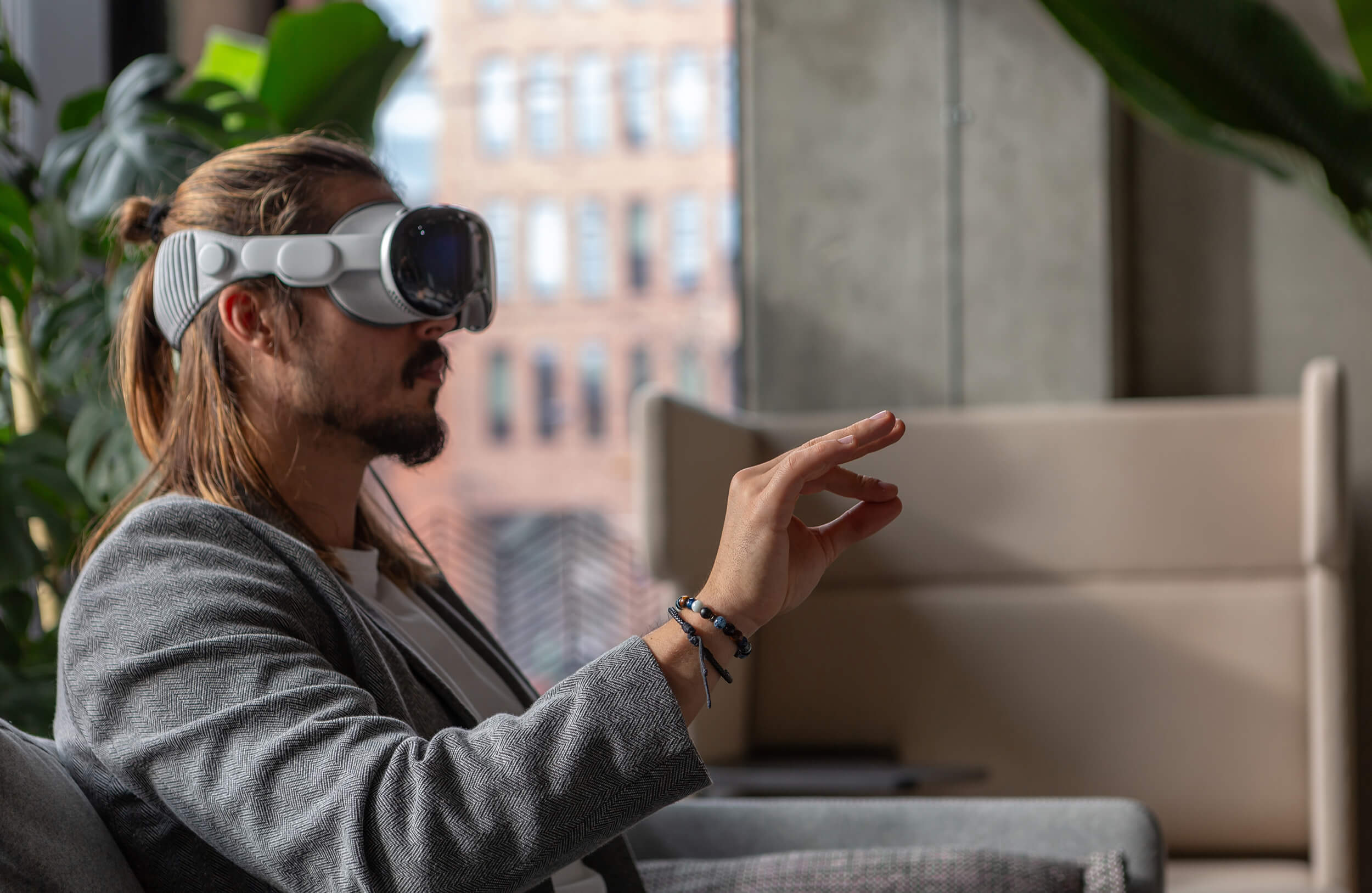
FAQs about the Apple Vision Pro
How does spatial computing work?
Spatial computing combines physical and digital environments, allowing users to interact with virtual objects as if they were part of their real-world surroundings. It uses sensors, cameras, and AI algorithms to track the wearer’s movements and understand their physical environment, to integrate digital elements into it. By interpreting user gestures and voice commands, spatial computing creates intuitive interactions, making it feel as if digital objects exist in the physical space around the wearer.
Is spatial computing the future?
Spatial computing will play a huge role in the future of technology. As mixed reality technologies advance, they’ll impact and improve industries such as education, healthcare, retail, and entertainment. The potential for immersive experiences is vast. Companies that invest in spatial computing now will likely benefit from a competitive advantage as adoption grows and new applications emerge.
What does the Apple Vision Pro do?
The Apple Vision Pro puts the wearer in immersive environments and allows them to visualize aspects of or an entire digital world in the virtual space. It allows for virtual meetings and offers educational opportunities through simulations and virtual experiences. It’s a versatile tool for entertainment, collaboration, and learning.
Does the Apple Vision Pro have accessibility features?
Its design makes it easy to put on or take off, and the external battery keeps the headset weight at a reasonable level of just 23 ounces. The UI and UX of VisionOS are also familiar to those who have used Apple devices before.
Sources and References
- https://www.apple.com/apple-vision-pro
- https://www.ocavu.com/blog/immersive-technologies-explaining-ar-vr-xr-mr-and-spatial-computing
- https://healthtechmagazine.net/article/2024/04/spatial-computing-healthcare-perfcon
- https://www.mhp.com/en/insights/blog/post/spatial-computing
- https://arborxr.com/blog/understanding-spatial-computing-how-its-changing-technology-for-the-better
- https://www.forbes.com/sites/stevenaquino/2024/04/15/apple-vision-pro-review-the-first-pass-at-spatial-computing-is-an-accessible-one-for-all
- https://www.flexos.work/learn/ways-apple-vision-pro-will-change-how-we-work
- https://edition.cnn.com/2024/06/04/tech/vision-pro-ai-apple/index.html
- https://www.journee.ai/en/insights/blog/solution-by-industry/the-impact-of-apple-vision-pro-in-automotive-practical-use-cases-of-mr-throughout-the-value-chain
- https://huggingface.co/spaces/akhaliq/depth-pro
